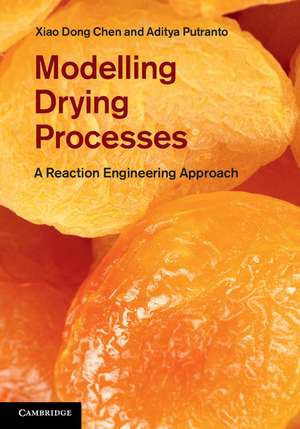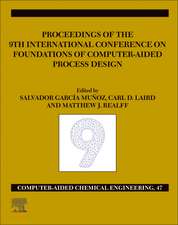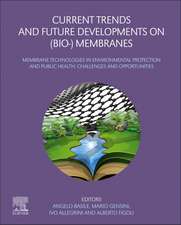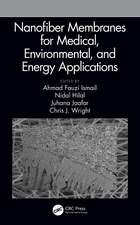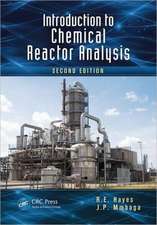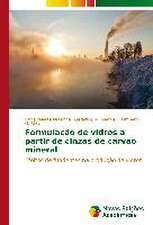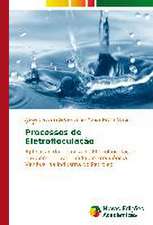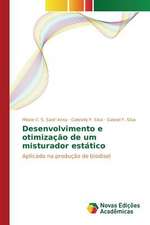Modelling Drying Processes: A Reaction Engineering Approach
Autor Xiao Dong Chen, Aditya Putrantoen Limba Engleză Hardback – 22 mai 2013
Preț: 890.72 lei
Preț vechi: 1035.72 lei
-14% Nou
Puncte Express: 1336
Preț estimativ în valută:
170.44€ • 182.26$ • 142.11£
170.44€ • 182.26$ • 142.11£
Carte tipărită la comandă
Livrare economică 18 aprilie-02 mai
Preluare comenzi: 021 569.72.76
Specificații
ISBN-13: 9781107012103
ISBN-10: 1107012104
Pagini: 252
Ilustrații: 134 b/w illus. 19 tables
Dimensiuni: 178 x 253 x 15 mm
Greutate: 0.64 kg
Ediția:New.
Editura: Cambridge University Press
Colecția Cambridge University Press
Locul publicării:New York, United States
ISBN-10: 1107012104
Pagini: 252
Ilustrații: 134 b/w illus. 19 tables
Dimensiuni: 178 x 253 x 15 mm
Greutate: 0.64 kg
Ediția:New.
Editura: Cambridge University Press
Colecția Cambridge University Press
Locul publicării:New York, United States
Cuprins
1. Introduction: 1.1. Practical background; 1.2. A 'microstructural' discussion of the phenomena of drying of moist porous materials; 1.3. The reaction engineering approach (REA) to modeling drying; 1.4. Summary; 2. Reaction Engineering Approach I: Lumped-REA: 2.1. The REA formulation; 2.2. Determination of REA model parameters; 2.3. Coupling the momentum, heat and mass balances; 2.4. Mass or heat transfer limiting; 2.5. Convective drying of particulates or thin layer products modeled using the L-REA; 2.6. Convective drying of thick samples modeled using the L-REA; 2.7. The intermittent drying of food materials modeled using the L-REA; 2.8. The intermittent drying under time-varying temperature and humidity modeled using the L-REA; 2.9. The heating of wood under linear-increased gas temperature modeled using the L-REA; 2.10. The baking of cake modeled using the L-REA; 2.11. The infrared-heating drying of a mixture of polymer solution under time-varying infrared-heating intensity modeled using the L-REA; 2.12. The intermittent drying of a mixture of polymer solution under time-varying infrared-heating intensity modeled using the L-REA; 2.13. Summary; 3. Reaction Engineering Approach II: Spatial-REA: 3.1. The spatial reaction engineering approach (S-REA) formulation; 3.2. Determination of the S-REA parameters; 3.3. The S-REA for convective drying; 3.4. The S-REA for intermittent drying; 3.5. The S-REA for wood heating under constant heating rate; 3.6. The S-REA for baking of bread; 3.7. Summary; 4. Comparisons of the REA with Fickian-Type Drying Theories, Luikov's and Whitaker's approach: 4.1. Model formulation; 4.2. Boundary conditions' controversies; 4.3. Diffusion-based model with the local evaporation rate; 4.4. Comparison of the diffusion-based model and the L-REA on the convective drying; 4.5. Comparison of the diffusion-based model and the S-REA on the convective drying; 4.6. Model formulation of Luikov's approach; 4.7. Model formulation of Whitaker's approach; 4.8. Comparison of the L-REA, Luikov's and Whitaker's approach for modeling heat treatment of wood under constant heating rate; 4.9. Comparison of the S-REA, Luikov's and Whitaker's approach for modeling heat treatment of wood under constant heating rate; 4.10. Summary.
Recenzii
'The REA is easy to use with the guidance of featured application examples given in this book … highly recommended for both academics and industry practitioners involved in any aspect of thermal drying.' Zhanyong Li, Tianjin University of Science and Technology
'An interesting book on a novel approach to mathematical modeling of an important process … a single comprehensive reference source.' Sakamon Devahastin, King Mongkut's University of Technology Thonburi
'… a profound [and] at the same time relatively easily implementable modelling approach to model and predict drying processes … a very fundamental and theoretically rigorous spatially distributed modelling approach …' Benu P. Adhikari, University of Ballarat, Australia
'An interesting book on a novel approach to mathematical modeling of an important process … a single comprehensive reference source.' Sakamon Devahastin, King Mongkut's University of Technology Thonburi
'… a profound [and] at the same time relatively easily implementable modelling approach to model and predict drying processes … a very fundamental and theoretically rigorous spatially distributed modelling approach …' Benu P. Adhikari, University of Ballarat, Australia
Notă biografică
Descriere
A comprehensive summary of the state of the art in the reaction engineering approach to drying processes, including modelling, experimentation and applications.
